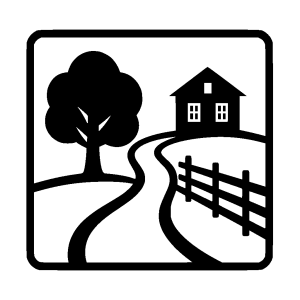

29. Kvarnbacken – The mill hill
Kvarnbacken is actually the name of the mountain a little further on. When we say Kvarnbacken today, we refer to this entire area. Here are the ruins of an old brickyard. The bricklayer’s name is Gustav Eriksson and he was born in Gotland. He came to Norrby in 1857. A few years later, the brickyard was built, which was in operation until 1893, when Eriksson died. With his passing, brick production also ceased here on the site. Today, some fine stone foundations remain; a round foundation for a kiln west of the path, the foundation for a cabin east of the path, and the foundation for a barn and a stone pier for the shipping dock down by the water. In the area to the north, there are also a large number of water-filled mud holes. The public is warned, it is easy to get lost and fall into a bottomless mud hole!
The water mill is an invention that began to spread during the 13th century, it saves both time and labor. Grinding grain is a heavy and very time-consuming job that was previously done manually. At Kvarnbacken there were two water mills, each on a streambed. The inflow is made up of the ditch that drains the large Kvarnbacken bog and Myran further upstream.
The mills were probably simple skvaltkvarnar (squelch mills), where the horizontal water wheel drove the millstone directly without a complicated gear solution. The mills were driven by flowing water via a paddle wheel which in turn drove a heavy millstone that ground the grain into flour. The word ’skvalt’ comes from the sound of the water as it sloshes along the stream. There have been several similar squelch mills in the area, including at Norrbygård and at Bergby Gård. A more modern water mill with a vertical water wheel was built in Bergby in the 19th century (see sign 13). When the brickworks were closed down at the end of the 19th century, the brick barn was moved to Norrbygård where it remains in a rebuilt condition to this day.

